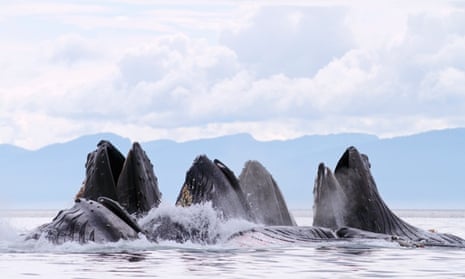El Niño this winter will leave a big, wet but not necessarily snowy footprint on much of the United States, including parched California, forecasters said Thursday.
The National Oceanic Atmospheric Administration issued its winter forecast and “the driver of this winter’s outlook is El Niño”, said Mike Halpert, deputy director of NOAA’s climate prediction center.
El Niño changes weather worldwide, mostly affecting the United States in winter. The weather pattern happens every few years when the Pacific Ocean warms up around the equator. This year’s is one of the strongest El Niños on record.
NOAA expects a cooler and wetter winter for the south. For California, more precipitation than usual is expected during the critical time that its reservoirs usually fill, but there’s no guarantee. Only northern tier states, the Ohio Valley states and Alaska should be dry.
While California’s drought is likely to lessen in January, even the wettest winter on record – 33 years ago – didn’t have enough rain to wash out the current four-year drought, said NOAA hydrologist Alan Haynes of the California Nevada River forecast center.
Forecasters see a milder, warmer winter north of the Mason-Dixon line and for all of California and Nevada. Texas and the deep south are forecast to be cold.
Overall, the nation should have 2% fewer days when people have to fire up their furnaces, said Halpert. He said the northeast, where it was chilly and snowy last year, should see 6% fewer heating days.
Because of El Niño, NOAA is more confident than usual that its forecast is on target – 70% for a wet south, Halpert said.
The federal winter forecast doesn’t address snow, just wet or dry and warm or cold. Even though it’s likely to be both cooler and wetter in the south, it is usually so warm there that it needs a blast of Arctic air for snowstorms and that’s not looking likely, Halpert said. And while the north is likely to be warmer, past El Niños have had some big snowstorms.
Historically, because there’s more storminess during El Niños, there’s been a slight but not great increase in snowfall in the north-east during El Niños, said NOAA El Niño expert Michelle L’Heureux. But that could be skewed by a few big years in the past like the winter of 2009-10, she said. The Great Lakes area tends to get less snow during El Niños, she said.
Private forecast firm Weather Bell Analytics predicts a swath from New Mexico across to the Carolinas and up the coast to Connecticut will get 50% more snow than usual.
AccuWeather, another private firm, sees severe thunderstorms in Florida, but forecasts less lake-effect snow around the Great Lakes, occasional mild days for the midwest and says it will be “not as brutal” for the north-east.

Comments (…)
Sign in or create your Guardian account to join the discussion